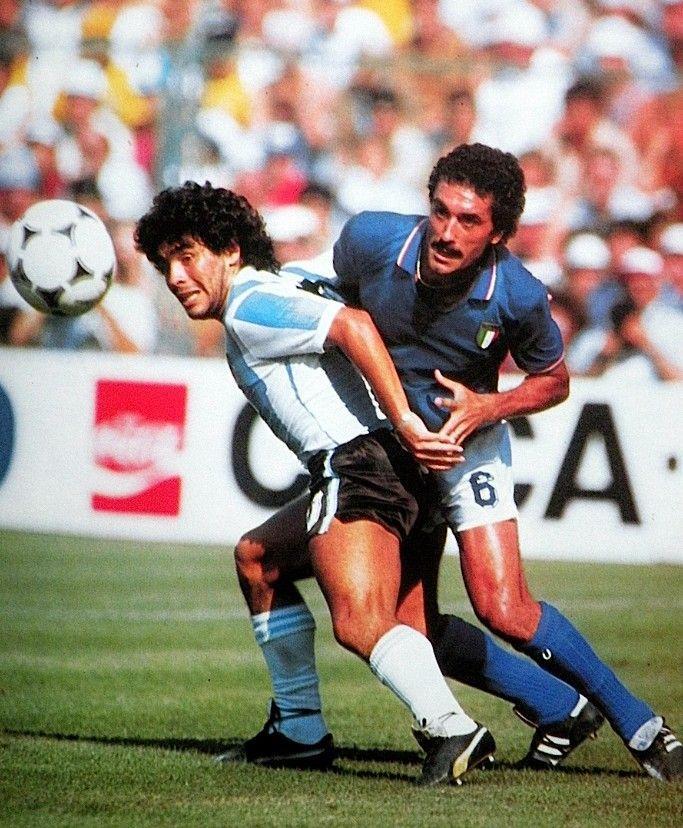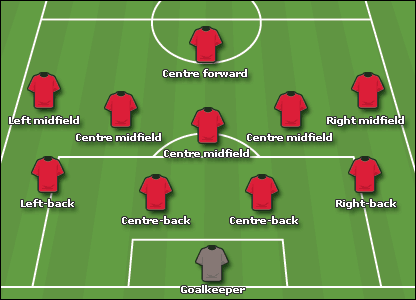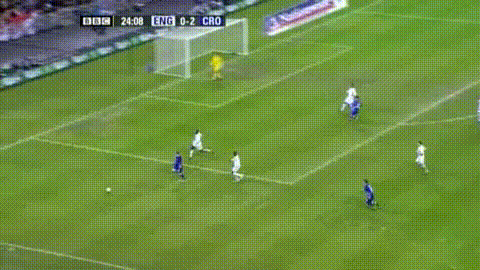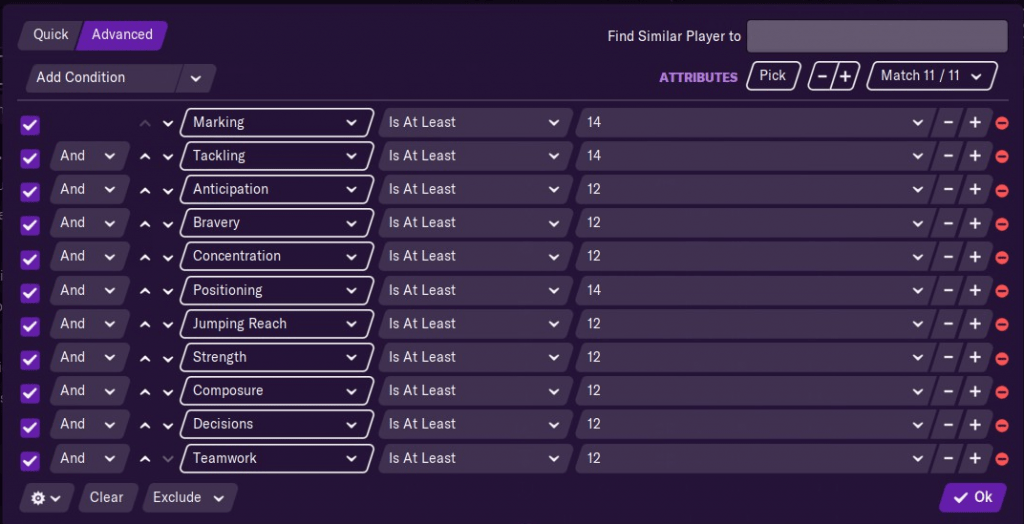
Total Football Journeyman: Swiss Army Knife Method to FM Tactics
Recently, I changed my approach to both tactic creation and playing matches in FM21. I would like to share this approach with you, because it has given me a lot of joy. It’s what I call the Swiss Army Knife Method to Football Management. At its core, my approach uses a very basic 4-5-1 shape. But unlike my previous articles, which often chronicled historic tactics and teams, this guide is not about any one particular formation. It’s really about building a whole tactical system around total tactical flexibility in both attack and defence. The aim is to play the best football that we can by giving equal attention to both defence and attack. In a perfectly balanced formation, one should not suffer at the expense of the other. Thus Total Football = Total Balance.
There is good reason why I chose that fantasy picture of Messi and Cruyff together. They are probably two of the best examples of truly “universal” players. And, in my opinion, 4-5-1 is likewise a universal “swiss army knife” of formations. So how can 4-5-1 help us to achieve total balance in the game? Hopefully this guide will answer this question as well as offer insight into why 4-5-1 is football’s most flexible formation.
Why 4-5-1?
Good defence is the spine of any good tactic. The importance of defensive stability in football is often underestimated. That is because we often focus on the efforts of the attackers and how they could score more goals. After all one wins by scoring more than the other team. But even if goals win games, they are worthless if the team’s centrebacks, fullbacks, and midfielders aren’t capable of keeping the opposition from scoring on their own.
Thus my recent interest in the 4-5-1 formation is firstly because of its defensive qualities. Its shape puts an emphasis on defensive stability with the back four and the overloaded midfield strata. At the same time it does not neglect offence. The central striker can be supported by attack-minded players from both the midfield and the defensive strata.
The other reason for my love of 4-5-1 is its incredible flexibility. Essentially, any formation that employs the back-four is some variation of 4-5-1. The 4-5-1 is able to adapt into a variety of tactical shapes in order to counter most formations that the opposition can throw at you.
The fun in using 4-5-1 is in how easy it is to adapt your game plan depending on opposition’s formation. Even mid-game. By moving the wingers up, it can be turned into a 4-3-3. Or its more aggressive 4-1-2-3 variant. And even into 4-3-1-2, if you need to go more offensive with the two strikers upfront. The 4-4-2 diamond formation similarly only takes two quick adjustments to your wingers. This brings up the importance of having very versatile, well-rounded players in a lot of your positions. Especially your wingers and forwards. It is not the first time I stress this. And I know that I might sound like a broken record. But the simple truth is that having complete “Total” footballers in key positions is a major advantage to any tactic. And not just the typical possession-oriented Total Football systems.
For instance, I will give the example of one of my favourite newgen players in FM21.
Ludovic Petit’s main strength is his versatility. As such he is a perfect player for the 4-5-1 “Swiss Knife” system. He can play in a variety of positions in all the tactical variations discussed above. Whether as a traditional winger in the base 4-5-1. Or an attacking central midfielder in the more aggressive 4-1-2-3. Or even as the supporting striker in the narrow diamond. So it is not just about formation flexibility but player and role flexibility.
Tactical flexibility is very important and can mean the difference between a close win or a frustrating tie. So if you see your opponent withdraw into a bottom-heavy “park-the-bus” formation then switch to 4-1-2-3 or 4-3-1-2. Likewise the defensive stability that the 4-1-4-1 can offer is invaluable when trying to shut down a superior opponent’s 4-2-3-1 with its attacking midfielder and three forwards. Especially if you have a good defensive midfielder. In a 4-1-4-1, DMC will absolutely take the opposing AMC out of the game. Even better if he happens to be their playmaker. All it takes is a few small changes in player roles or positions. And at the end of the day, the only tactic you need to train is the basic 4-5-1.
Defending – It’s All In The Attributes
So let us start with the defensive base of the tactic. But I will be taking a different approach. Rather than looking at the player roles, I will examine the attributes. Specifically those which the game defines as absolutely essential to defensive football. Roles will come later. For now I want to show how you can identify those players in your team who will be your defenders. And not necessarily if they are natural in the centreback position. I’ve had some of my best defenders start of as midfielders. Only to be later retrained into centrebacks. Like I said before, versatility is everything.
In FM games, player attributes are grouped into three broad categories. The three categories being technical, mental and physical.
For a player to excel in defending, they need to possess the attributes from all three categories to aid them in both:
1) Keeping the opposition player (with or without the ball) from getting into a dangerous scoring position and…
2) Taking the ball away from the opponent.
To help in identifying the relevant attributes, the following guide is invaluable. The description of each attribute tells you exactly what the attribute is for. Whether it’s required on the ball, off the ball movement, for attacking or defending. It is a really useful guide.
https://www.guidetofm.com/players/attributes/2/
Technical Attributes
Without getting into the specialized roles such as Ball-playing Defender (BPD), Stopper or Fullback, there are only two technical attributes that are absolutely essential to basic defenders: Marking and Tackling. Other technical attributes like Passing, Technique, and First Touch could be important for a more specialized defender role such as BPD or libero. This is because they are players that will be expected to carry the ball and perform more challenging technical actions with it, like long passes and complicated dribbles.
Heading too would be in this list of preferred but not mandatory defending attributes. Since it is not actually needed to defend. Heading is a offensive attribute that defines how accurately a player can head the ball to his intended target area. Of course it is nice for some of your defenders to excel in heading, especially if you intend to score some goals from dead ball situations. But to actually prevent the other team from scoring and win the ball back all you need is:
Marking – how well a player can take up a position close to an opposition player that makes him a less viable passing option.
Tackling – how well a player can take the ball from an opposition player without committing a foul.
Mental Attributes
Speaking of fouls. Mental attributes are very important for your defending players for exactly that reason. They help by preventing or minimizing fouls. Fouls will still happen. They are inevitable when playing the defensive side of the game. After all, defending is notoriously associated with the Dark Arts of football for a reason. And some of the best defensive players in history had high levels of aggression. Players like Sergio Busquets, Diego Simeone and Claudio Gentile were never known to shy away from a scrap. Rather they always looked to physically impose themselves on their opponent.

So in FM21, Aggression is an attribute that basically defines how likely a player is to get involved in a physical situation. It also affects how much he exerts his physical force in such situations. That includes attempting to tackle or mark an opposition player. Or simply competing with an opposition player to get to the ball. By itself high aggression attribute does not increase the violent or other unsporting behaviours that lead to fouls. Higher risk of fouls comes from hidden attributes like Dirtiness and Sportsmanship.
In fact, I actually prefer my defensive players to have high values in their Aggression attribute. Who wouldn’t want to have players like Claudio Gentile in their backline?
However low levels in other key attributes, when combined with high Aggression, could make fouls more likely to be committed as a result of greater involvement in physical situations. In this case, you need to make sure that your High Aggression defender has equally high attributes in Tackling, Anticipation, Concentration, and Decisions.
Anticipation – how well a player can predict the movements and other actions of his teammates and opposition players.
Concentration – how unaffected a player is by lost focus when making a decision. Basically it is the attribute that regulates the increasing rate of mistakes the longer the match goes on. A player will gradually lose focus during a match. And the more his focus falls the more likely he is to a make a poorer decision. Higher concentration reduces the rate at which focus drops.
Decisions – how well a player can evaluate the options he is aware of and choose which action to perform, when to perform and how to perform it. Decisions is one of the most important mental attributes. However it is limited by the options he is aware of , which in turn is affected by Vision.
So there you go, the pieces are starting to fall into place. You know you have a great defender when you have a player with excellent Aggression, Tackling, Marking, Anticipation, Concentration and Decisions.
Those six attributes already make sure that not many opponents will be able to get past him. But his Composure, Bravery and Positioning are also very important.
Composure – how unaffected a player is by mental pressure when making a decision or performing his chosen action. When defending your players face a lot of mental pressure due to being in close proximity to opposing attackers (“Holy s#%*, that’s Messi running at me!”) and the high importance of the situation (“I don’t want to be the one to let in the losing goal!”).
Bravery – how willing a player is to choose to perform an action that risks pain or injury.
You definitely need a certain level of bravery to perform a sliding tackle like the one below.
Positioning – how well a player moves and positions himself, in order to deal with an opposition attack, when he is off the ball and the opposition team is in possession. It is the defensive equivalent of the offensive Off The Ball attribute and is one of the essential defensive attributes.
I am also going to argue that Teamwork attribute is important for any defensive-minded player. Mainly because it relates to how closely a player follows his tactical instructions and how aware he is of the positions and movements of his teammates. Generally, you don’t want anything fancy from your defenders, other than stopping the other team from scoring. You will also want your defensive group to work well as a coordinated unit. Especially when in combination with a Sweeper Keepr and operating with a high defensive line and offside trap.
Pretty self-explanatory. Ideally you will want most of your defenders, whether centrebacks or defensive fullbacks, to be tall and physically strong. For obvious reasons. Height will help them to deal with opponent’s crosses and score goals during your own set-pieces. And Strength is simply that, how well a player can exert physical force on an opposition player. And for a defender it basically means everything.
Strength influences almost all defensive actions in the game. Strength affects how likely a player is to succeed in a physical situation such as shielding the ball from an opposition player while standing or dribbling, when attempting a tackle, when marking an opposition player and when competing with an opposition player to get to the ball.
To Be Continued…
If you enjoyed this article, then please follow us @ Dictate The Game’s Facebook and Dictate The Game’s Twitter.
And a few other interesting articles:






